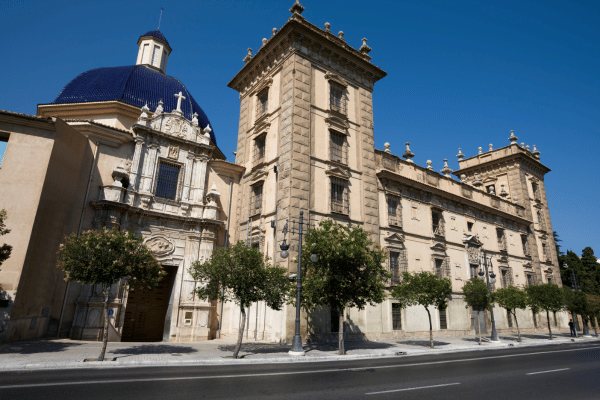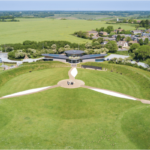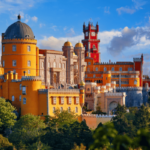Dive into the heart of Valencia where the Museum of Fine Arts stands as a beacon of cultural and artistic magnificence. This esteemed institution is not just a museum; it’s a journey through time, showcasing masterpieces that span centuries. Embark on this exploration at the Valencia Museum of Fine Arts, where every artwork tells a story, inviting you to become part of its narrative.
Welcome to Valencia’s Artistic Jewel

Valencia’s Museum of Fine Arts is more than a destination; it’s an experience. As you step through its grand entrance, the weight of the mundane lifts, replaced by a sense of wonder. The museum, nestled in the lush surroundings of the Turia Gardens, serves as a sanctuary for art lovers. It’s a place where the hustle of city life fades, allowing the beauty of art to take center stage.
Inside, the air is thick with the scent of history and oil paint, a testament to the centuries-old masterpieces adorning the walls. Each room unfolds like a chapter in a book, narrating the evolution of Spanish art. From Gothic to Renaissance, Baroque to Romanticism, the museum encapsulates the rich tapestry of artistic endeavors. It’s not just an exhibition; it’s a dialogue between the past and the present.
The Valencia Museum of Fine Arts is not merely a collection of art; it’s a cultural haven. It offers a refuge for those seeking solace in beauty and a spark for those in search of inspiration. The museum transcends boundaries, inviting visitors from around the world to witness the universal language of art. Here, amidst the silent whispers of canvases and the soft footsteps in the halls, one finds a connection to the depths of human expression.
A Stroll through History: The Museum’s Origins
The Museum of Fine Arts in Valencia is steeped in history, its origins tracing back to the royal decree of 1839. Initially housed in smaller venues, it found its permanent home in the magnificent building we see today. This transition marks a significant chapter in the museum’s evolution, reflecting the growing appreciation for art in Valencia.
As the museum expanded, so did its collection, becoming a repository of cultural heritage. The walls of this institution have witnessed the ebb and flow of artistic trends, each piece carefully selected to represent the pinnacle of creativity. This curated journey through time offers visitors a unique glimpse into the artistic legacy of Spain and beyond.
Nestled within the tranquil expanse of the Turia Gardens, the museum’s location is no coincidence. The serene setting complements the historical narrative, creating a harmonious blend of art and nature. It’s here, amid the quiet beauty of its surroundings, that the Valencia Museum of Fine Arts stands as a testament to the enduring power of artistic expression.
Masterpieces Galore: Highlights of the Collection
The Valencia Museum of Fine Arts is renowned for its extensive collection, a veritable treasure trove of artistic masterpieces. Each room is a gateway to a different era, housing works by renowned artists such as Velázquez, El Greco, and Goya. These pieces not only depict the artistic prowess of their creators but also serve as windows into the cultural and historical contexts of their times.
Among the highlights is Velázquez’s portrait of Philip III, a piece that exemplifies the artist’s mastery over realism and depth. This painting, along with others in the collection, offers a narrative that extends beyond the canvas, inviting viewers to delve into the stories behind the art. It’s an immersive experience that bridges the gap between the observer and the observed, creating a dialogue that transcends time.
The museum also boasts a significant collection of sculptures, frescoes, and ceramics, providing a comprehensive overview of Spanish art history. Each artifact, with its unique story and craftsmanship, contributes to the mosaic of Valencia’s artistic heritage. The museum not only celebrates these works but also ensures their preservation for future generations, making it one of the best activities in Valencia for cultural aficionados.
Behind the Scenes: Conservation Efforts
At the heart of the Valencia Museum of Fine Arts lies a dedicated team of conservators. Their meticulous work ensures that each piece, from delicate frescoes to robust sculptures, is preserved for posterity. This behind-the-scenes effort is crucial, safeguarding the artistic legacy contained within the museum’s walls. The conservation process is both an art and a science, blending traditional techniques with modern technology.
One notable project involved the restoration of a Renaissance masterpiece, a process that unveiled previously hidden details and restored the work’s original vibrancy. These endeavors not only breathe new life into the artworks but also deepen our understanding of the artists’ techniques and intentions. It’s a testament to the museum’s commitment to maintaining the integrity and allure of its collection.
The museum’s conservation efforts extend beyond individual artworks. Environmental controls ensure optimal conditions for art preservation, while research and education initiatives share the importance of conservation with the public. This holistic approach underscores the museum’s role not just as a cultural haven but as a steward of Valencia’s artistic heritage.
An Architectural Marvel: The Museum’s Structure
The Valencia Museum of Fine Arts is not only celebrated for its vast collection but also for its architectural grandeur. The building itself is a work of art, combining elements of classical and modern design. Its facade, adorned with intricate sculptures and reliefs, invites visitors into a world where architecture and artistry converge. This harmonious blend enhances the museum’s ambiance, making it a visual feast even before one steps inside.
Upon entering, the grandeur continues with spacious galleries bathed in natural light. The clever use of space and light creates an environment that both showcases the artworks and becomes part of the exhibit. It’s a dynamic interplay between the container and the contained, where the building’s design complements the art it houses. This architectural ingenuity not only enhances the aesthetic experience but also underscores the museum’s role as a beacon of culture.
Moreover, the museum’s layout is thoughtfully designed to guide visitors on a journey through the history of art. Each wing and hall is carefully curated to facilitate a seamless flow from one era to another. This intentional design fosters an immersive experience, allowing visitors to fully engage with the art and its historical context. The museum’s structure, thus, plays a pivotal role in the storytelling, making it an integral part of the Valencia Museum of Fine Arts’ charm.
Interactive Spaces: Engaging with Art

The Valencia Museum of Fine Arts goes beyond traditional displays to offer interactive spaces that engage visitors in unique ways. These areas are designed to break down the barriers between art and audience, inviting hands-on participation. Whether it’s through digital touchscreens that reveal the layers of a painting or workshops that delve into artistic techniques, the museum fosters a deeper connection with art.
One standout feature is the museum’s use of augmented reality, allowing visitors to step into the scenes of historic paintings. This immersive experience brings art to life, offering a new perspective on classic works. It’s not just about viewing art; it’s about experiencing it in a dynamic and personal way. These interactive elements make the museum a vibrant and inclusive space, catering to art enthusiasts of all ages.
Moreover, the museum hosts regular events and talks that encourage dialogue and discovery. These gatherings, led by artists and experts, provide insight into the creative process and the stories behind the masterpieces. This interactive approach to art education enriches the visitor experience, making a trip to the Valencia Museum of Fine Arts not just a cultural outing but a journey of exploration and learning.
From Canvas to Sculpture: Diversity of Exhibits
The Valencia Museum of Fine Arts boasts a diverse range of exhibits, from classical paintings to contemporary sculptures. This variety ensures that every visitor finds something that resonates with them. The museum’s collection spans several centuries, offering a comprehensive overview of artistic evolution. It’s a testament to the museum’s commitment to showcasing a wide array of artistic expressions.
Sculptures in the museum provide a three-dimensional counterpart to the two-dimensional world of paintings. These pieces range from delicate marble figures to bold modern installations, each telling its own story. The tactile nature of sculptures adds a dynamic element to the museum experience, inviting visitors to explore art from multiple perspectives. This blend of mediums enriches the museum’s offerings, making it a haven for art lovers.
Moreover, the museum doesn’t confine itself to traditional European art. It also features works from around the world, highlighting the universal language of creativity. This inclusivity broadens the visitor’s understanding of art, transcending cultural and geographical boundaries. The Valencia Museum of Fine Arts is not just a museum; it’s a global stage for artistic dialogue.
Special Exhibitions: Temporary Treasures
The Valencia Museum of Fine Arts regularly hosts special exhibitions that offer a glimpse into rare and temporary treasures. These exhibitions, often curated around specific themes or periods, provide a fresh perspective on the world of art. They serve as a spotlight for both renowned and emerging artists, showcasing their work in a new light. This dynamic aspect of the museum keeps the experience vibrant and ever-changing.
One such exhibition might delve into the intricacies of the Renaissance period, bringing together works from across Europe. These temporary showcases allow visitors to explore a concentrated slice of art history, making complex themes accessible and engaging. It’s an opportunity to dive deep into specific artistic movements or techniques, enriching the visitor’s understanding and appreciation of art.
Moreover, these exhibitions foster collaboration with other museums and cultural institutions, creating a dialogue that extends beyond Valencia’s borders. Through loans and exchanges, the museum brings world-class art to the local audience. This cultural exchange not only enhances the museum’s collection but also strengthens ties within the global art community, underscoring the Valencia Museum of Fine Arts’ role as a cultural ambassador.
Art Beyond Boundaries: International Works
The Valencia Museum of Fine Arts prides itself on a collection that transcends geographical boundaries, showcasing international works that highlight the interconnectedness of the global art community. This diverse array includes pieces from various continents, offering a panoramic view of artistic expression worldwide. The museum’s inclusive approach fosters a deeper understanding and appreciation of different cultures and their unique contributions to the art world.
Among the international highlights are works by Italian and Flemish masters, which sit alongside Spanish treasures, creating a rich tapestry of styles and periods. This cross-cultural dialogue enhances the museum’s appeal, drawing visitors keen to explore art from a global perspective. The presence of these works in Valencia is a testament to the universal language of art, which knows no borders.
Furthermore, the museum’s commitment to international art encourages collaboration with artists and institutions from around the world. These partnerships result in dynamic exhibitions and programs that enrich the local cultural scene. Through these efforts, the Valencia Museum of Fine Arts not only serves as a custodian of Spanish art but also as a vibrant platform for cultural exchange, celebrating the diversity and unity of the artistic community.
Planning Your Visit: Tips and Insights
Visiting the Valencia Museum of Fine Arts requires a bit of planning to make the most of your experience. The museum’s vast collection can be overwhelming, so it’s wise to allocate sufficient time to explore. Starting early in the day helps avoid the crowds, allowing a more intimate engagement with the artworks. Consider focusing on specific sections that interest you most to enhance your visit.
To truly appreciate the museum’s offerings, attending a guided tour can be invaluable. These tours, led by knowledgeable guides, provide context and stories behind the masterpieces, enriching your understanding of the art. Additionally, the museum often hosts special events and workshops that offer deeper dives into specific themes or techniques, making your visit even more memorable.
Lastly, don’t forget to check the museum’s schedule for temporary exhibitions, which are among the best activities in Valencia for art enthusiasts. These exhibitions can offer unique, once-in-a-lifetime experiences that shouldn’t be missed. Planning your visit around these special showcases can provide a unique lens through which to view the museum’s permanent collection, making each visit a new discovery.
in summary
The Valencia Museum of Fine Arts stands as a testament to the enduring power of art to inspire, educate, and connect. Its halls, filled with masterpieces from various eras and regions, offer a sanctuary for those seeking to immerse themselves in the beauty of artistic expression. The museum not only preserves history but also fosters a vibrant dialogue between the past and the present, making each visit a unique journey of discovery.
Moreover, the museum’s dedication to inclusivity and education ensures that art remains accessible to all. Through interactive exhibits, guided tours, and special events, it demystifies the art world, inviting visitors to engage deeply with the works on display. This approach not only enriches the visitor experience but also cultivates a broader appreciation for the arts within the community.
In conclusion, the Valencia Museum of Fine Arts is more than a collection of artworks; it is a cultural haven that celebrates the diversity and unity of human creativity. Whether you are an art aficionado or a casual visitor, the museum offers a multitude of experiences that resonate on a personal level, leaving a lasting impression long after you’ve left its grand halls.
III. Frenquently Asked Questions About Spain
- What tips do you have for attending a football match in Spain?Experience the fervor of Spanish football by attending a match. Buy tickets in advance, especially for big clubs like FC Barcelona and Real Madrid, and join the local fans in their celebrations.
- How does Spain's history shape its modern identity?Spain's rich history, from Roman times through the Moorish period and into its global empire, influences its architecture, cuisine, and multicultural identity today.
- What are the visa requirements for visiting Spain?Visitors from many countries can enter Spain without a visa for short stays, but it's essential to check current requirements based on your nationality and purpose of visit.
- How can I participate in local Spanish festivals?Participating in local festivals requires planning ahead for accommodations and understanding the festival's traditions and etiquette to fully enjoy the communal celebrations.
- What are some family-friendly activities in Spain?Spain offers many family-friendly activities, from exploring interactive museums and science parks to enjoying beach days and theme parks like PortAventura.
- Can you recommend a route for a road trip through Spain?A road trip might start in vibrant Madrid, head to the historic cities of Toledo and Segovia, before exploring Andalusia's Seville, Granada, and the Costa del Sol.
- What should tourists know about tipping in Spain?Tipping in Spain is not mandatory but appreciated for exceptional service. Small tips in restaurants and for taxi drivers are customary.
- How can visitors respect Spain's cultural and environmental sustainability?Visitors can respect sustainability by supporting local artisans, choosing eco-friendly tours, reducing plastic use, and respecting natural and historical sites.
- What are the best ways to experience Spain's islands?Spain's islands, including the Balearics and Canaries, offer unique experiences from beach relaxation to hiking. Exploring local cultures and natural parks enhances the visit.
- What safety tips should travelers keep in mind while in Spain?Travelers should be mindful of personal belongings, especially in crowded tourist areas, and follow local advice for staying safe in unfamiliar environments.

Ryan Taylor, a seasoned traveler with over a decade of experience exploring Europe’s nooks and crannies, offers a wealth of knowledge and unique insights into the continent’s diverse cultures and landscapes. His passion for travel began in his early twenties, and since then, Ryan has journeyed through numerous European countries, collecting stories, tips, and a deep understanding of each destination’s unique charm. His blog entries are not just guides but narratives enriched with personal experiences, making every recommendation and piece of advice relatable and practical for fellow travel enthusiasts. With a keen eye for hidden gems and a love for sharing his adventures, Ryan’s writings are a treasure trove for anyone seeking to discover the beauty and richness of Europe.






